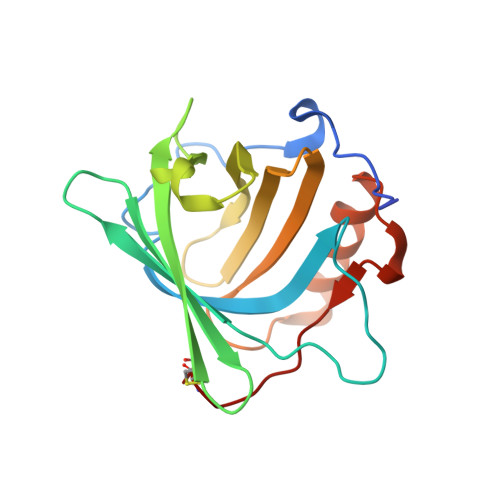The Neutrophil Lipocalin NGAL is a Bacteriostatic Agent that Interferes with Siderophore-mediated Iron Acquisition
Goetz, D.H., Borregaard, N., Bluhm, M.E., Raymond, K.N., Strong, R.K.(2002) Mol Cell 10: 1033-1043
- PubMed: 12453412
- DOI: https://doi.org/10.1016/s1097-2765(02)00708-6
- Primary Citation of Related Structures:
1L6M - PubMed Abstract:
First identified as a neutrophil granule component, neutrophil gelatinase-associated lipocalin (NGAL; also called human neutrophil lipocalin, 24p3, uterocalin, or neu-related lipocalin) is a member of the lipocalin family of binding proteins. Putative NGAL ligands, including neutrophil chemotactic agents such as N-formylated tripeptides, have all been refuted by recent biochemical and structural results. NGAL has subsequently been implicated in diverse cellular processes, but without a characterized ligand, the molecular basis of these functions remained mysterious. Here we report that NGAL tightly binds bacterial catecholate-type ferric siderophores through a cyclically permuted, hybrid electrostatic/cation-pi interaction and is a potent bacteriostatic agent in iron-limiting conditions. We therefore propose that NGAL participates in the antibacterial iron depletion strategy of the innate immune system.
- Molecular and Cellular Biology Program, Fred Hutchinson Cancer Research Center, Box 357275, University of Washington, Seattle, WA 98105, USA.
Organizational Affiliation:




















